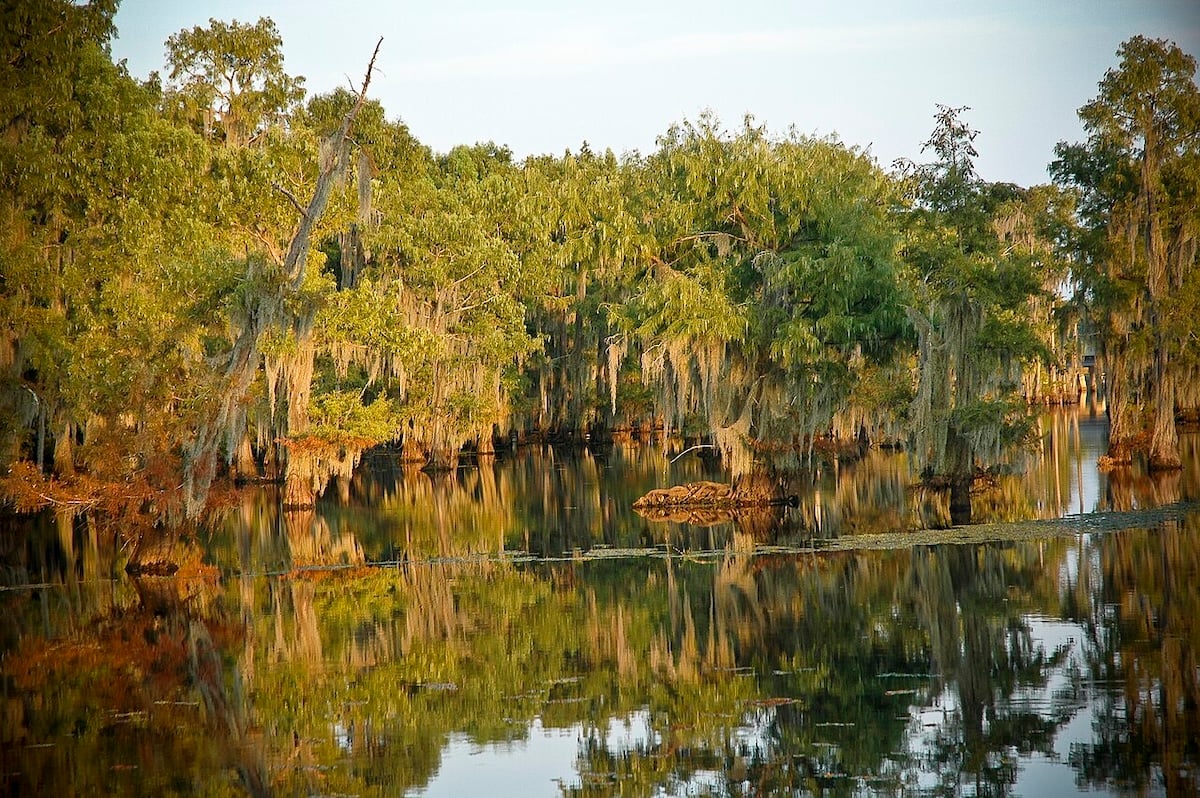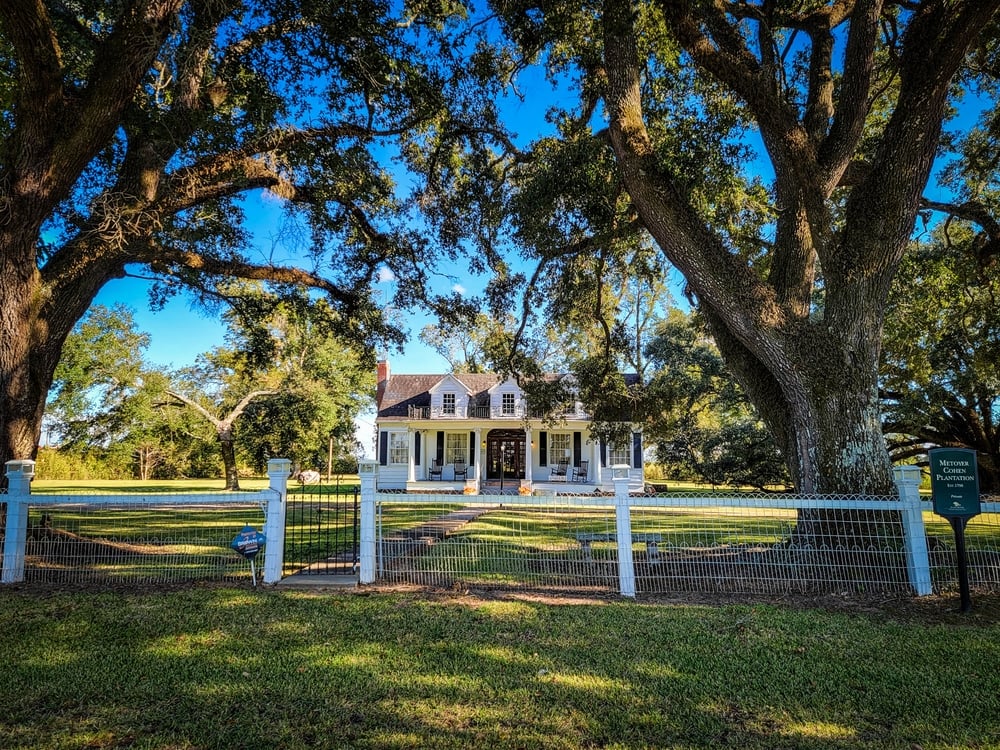
I’ve always felt that some towns don’t just sit on the map, they linger. In Southeast Louisiana, there are places you stumble into rather than arrive at, tucked between sugarcane rows, shaded roads, and slow-moving water.
They aren’t forgotten exactly, just quietly content to stay out of sight. These are towns with names you’ve maybe heard once and never again, where time hums low and neighbors wave from porches.
If you’ve ever wanted to feel the quiet settle in your bones, this is where it begins.
25. The Secluded River Hamlet of White Castle
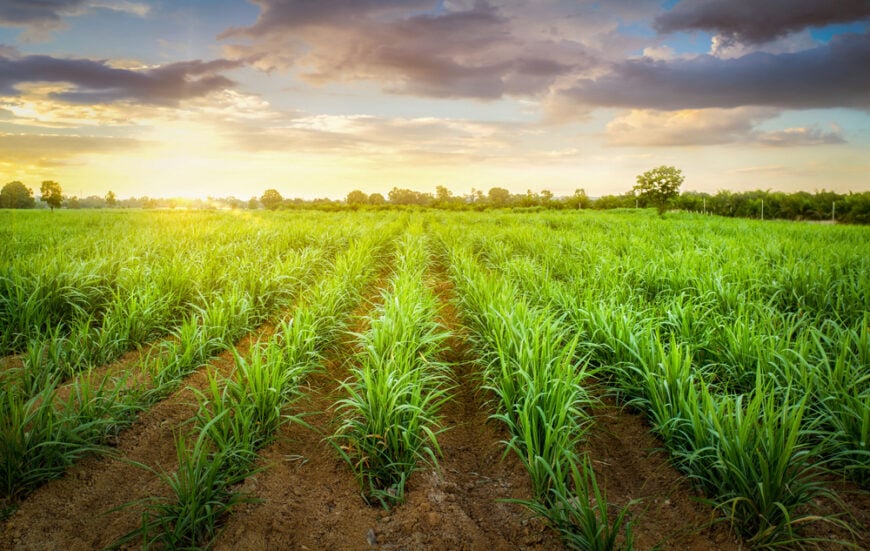
White Castle is a quiet gem along the Mississippi River where time seems to drift as slowly as the water. With under 2,000 residents, the town offers peaceful riverfront walks and stunning views of levees and Spanish moss-draped oaks.
My favorite stop here is the historic Nottoway Plantation, a marvel of antebellum architecture surrounded by lush greenery. Life in White Castle is unhurried, with fishing and farming shaping the local rhythm.
Its seclusion lies in the deep bends of the river and the distance from major highways. You can spend hours here listening to the birds and watching the sun shimmer off the water.
Where is White Castle?
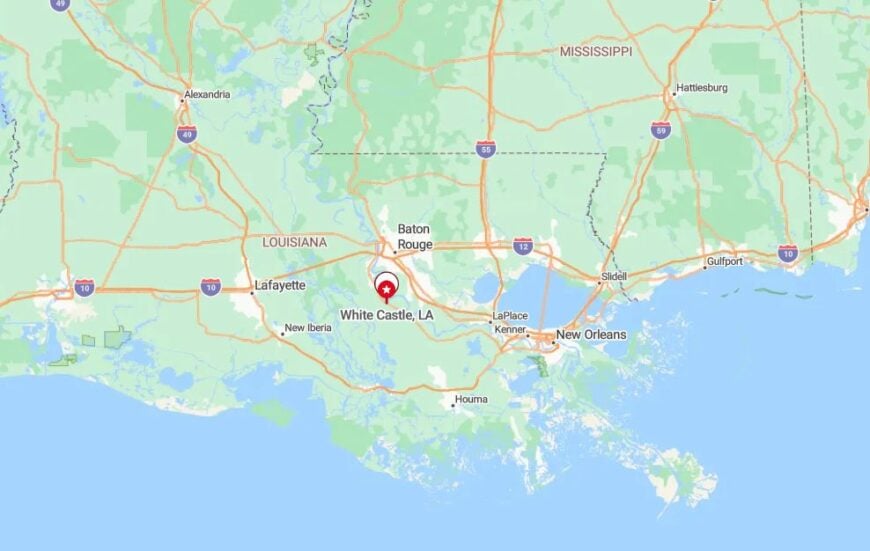
White Castle is located in Iberville Parish, southeast of Baton Rouge. It sits just off LA-1 and is bordered by sugarcane fields and riverbanks.
The best way to reach it is via a scenic drive along River Road, which winds through quiet countryside. It feels a world away from the city bustle, nestled along the quiet Mississippi.
24. The Sleepy Settlement of Sorrento
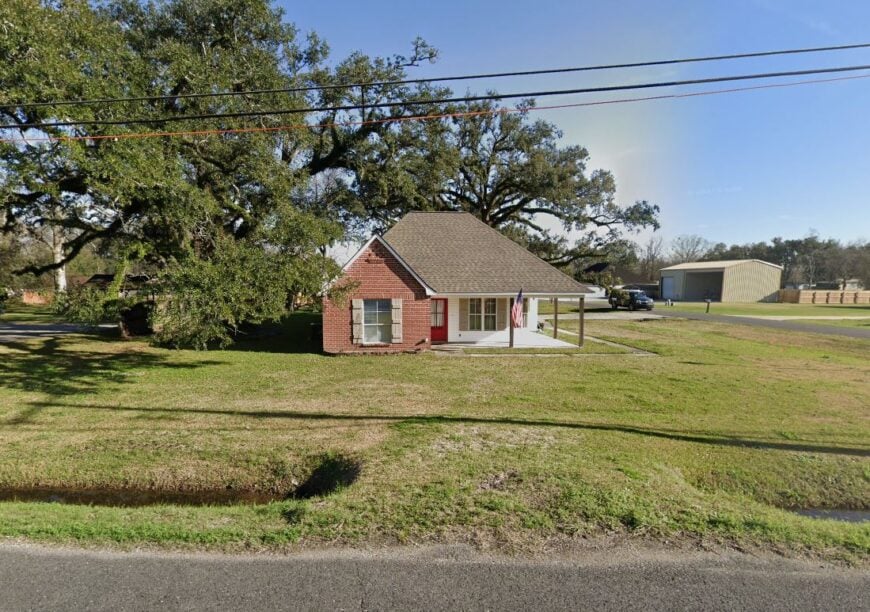
Sorrento is a sleepy settlement tucked away in Ascension Parish, offering a peaceful retreat in the heart of Cajun country. With fewer than 2,000 residents, the pace here is blissfully slow.
Local life revolves around small businesses, seafood shacks, and family-run farms. I love taking drives through its backroads, framed by fields and rows of cypress trees.
Its seclusion is thanks to its distance from nearby towns like Gonzales and the rural atmosphere that wraps it in quiet charm. It’s perfect for those seeking solitude without losing touch with Louisiana roots.
Where is Sorrento?
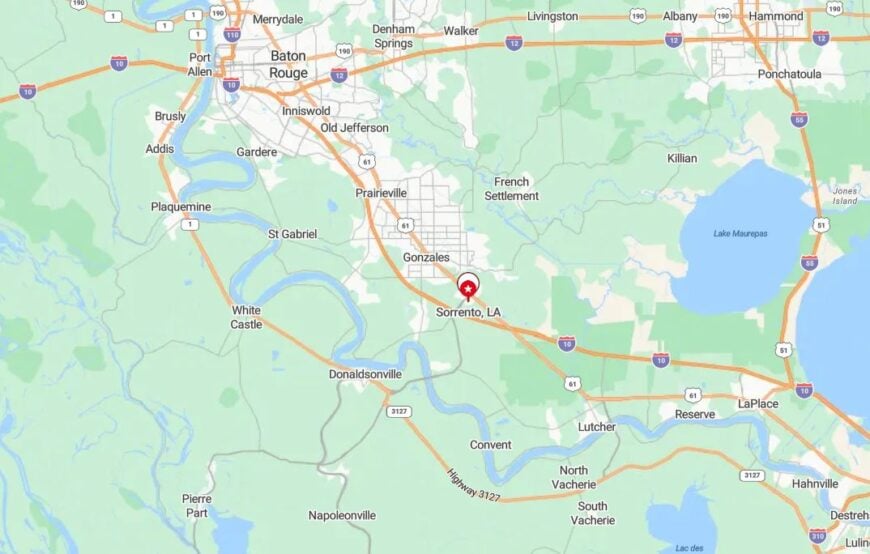
Sorrento lies along LA-22 in southeastern Louisiana, east of Donaldsonville and west of Lake Maurepas. Though not far from I-10, it remains wonderfully removed from city life.
I usually exit the interstate early to enjoy the drive along local roads. Surrounded by bayous and quiet farmland, it feels tucked into its own little world.
23. The Quiet Marshlands of Dulac
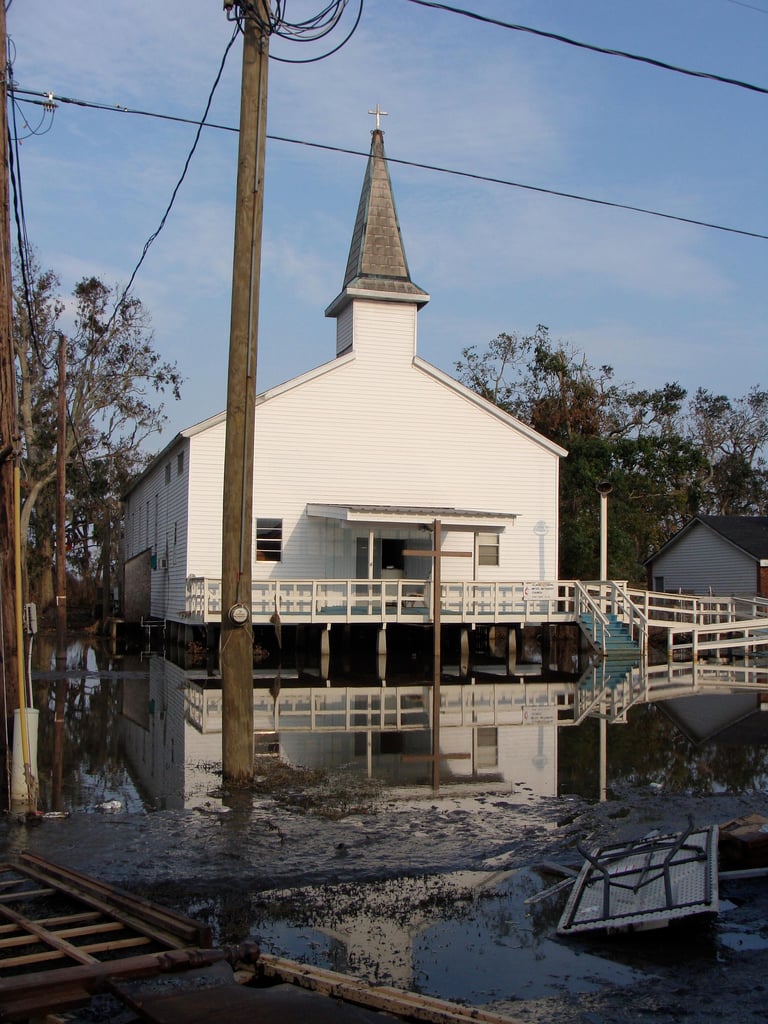
Dulac is a serene community in Terrebonne Parish where bayous rule the landscape and life flows with the tides. The population is small, mostly made up of fishing families with deep Cajun roots.
I enjoy watching shrimp boats drift out in the morning mist and sampling freshly caught seafood at family-run diners. The rich wetlands offer peaceful canoeing and birdwatching adventures.
Its seclusion stems from its southernmost position, nearly surrounded by water and marsh. It’s the kind of place where the hum of nature drowns out everything else.
Where is Dulac?
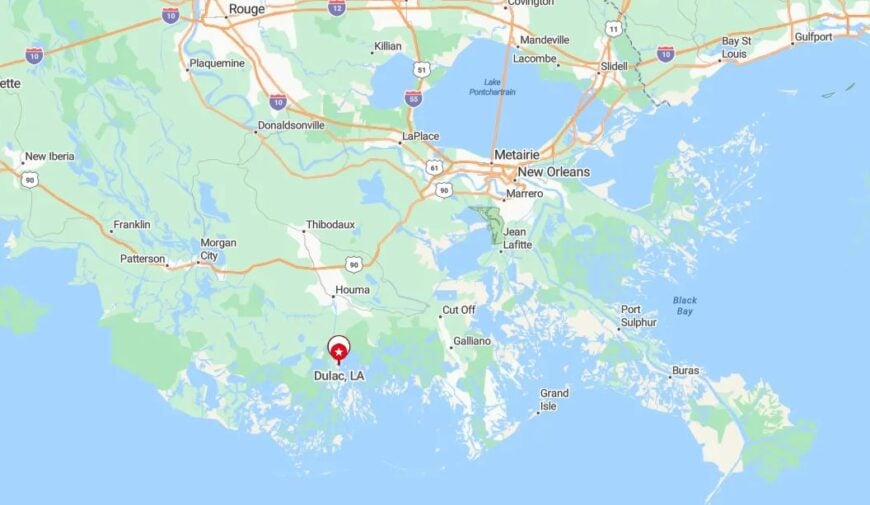
Dulac is located in southeastern Louisiana, south of Houma and accessible via LA-57. The drive takes you deeper into Terrebonne Parish’s wetland maze.
You’ll know you’re getting close when the road narrows and the scenery becomes a patchwork of water, reeds, and sky. Dulac feels like a floating town at the edge of the world.
22. The Hidden Pines of Natalbany
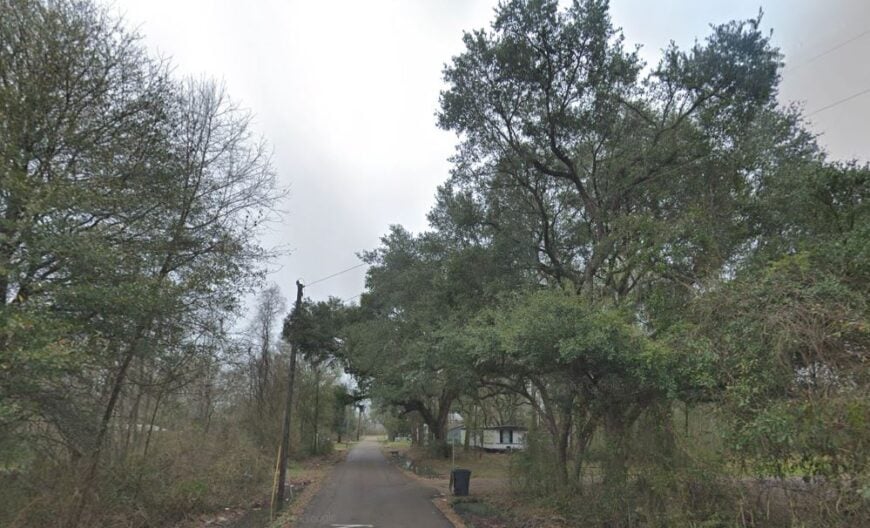
Natalbany is a forest-shaded hideaway in Tangipahoa Parish, where pine trees line quiet streets and life is lived slow and close to the land. With under 3,000 residents, it’s peaceful and modest.
I find solace in its stillness, enjoying hikes along wooded trails and stops at local produce stands. It’s a town for nature lovers and solitude seekers.
Natalbany feels cut off from the modern world, thanks to its backroad location and minimal development. Here, silence is golden and the skies stretch wide above tall trees.
Where is Natalbany?
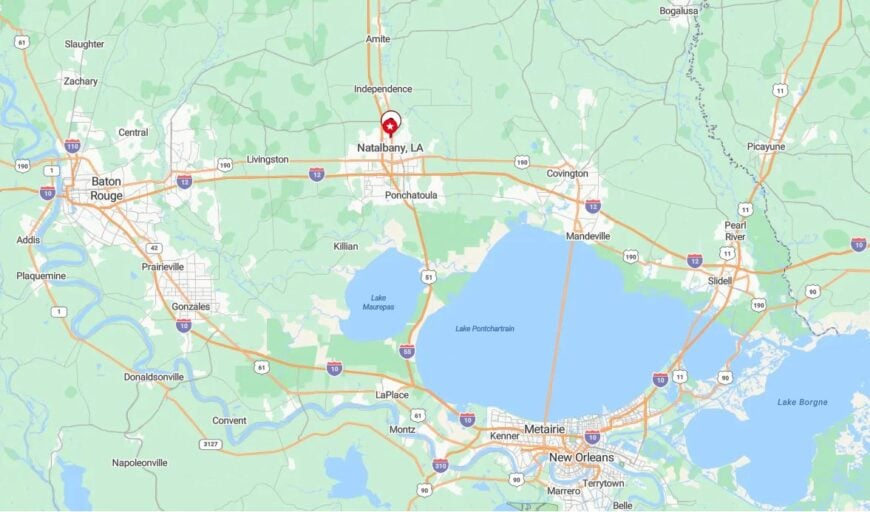
Natalbany sits just north of Hammond in southeastern Louisiana, tucked between LA-1064 and LA-443. Though close to Hammond, it feels entirely separate.
Driving into Natalbany, you pass through a canopy of trees and farmland. It’s this quiet corridor that lends the town its secluded feel.
21. The Forgotten Bayou of Gibson
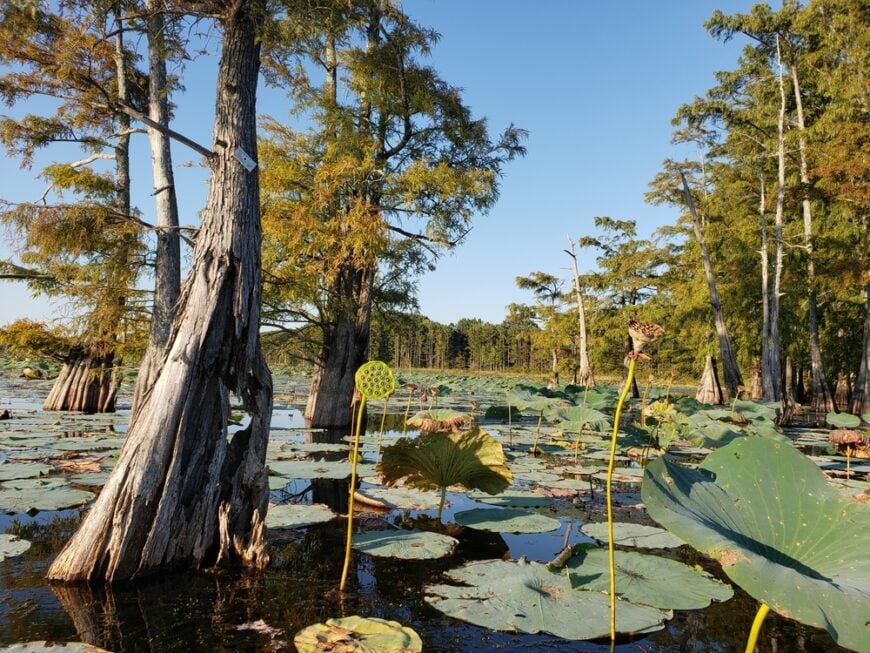
Gibson is a hidden treasure along Bayou Black, where life is centered on fishing and the natural rhythm of the tides. It’s one of those places I found almost by accident but have never forgotten.
With fewer than 3,000 residents, it thrives on quiet traditions and the bounty of the wetlands. I often kayak along the bayou or photograph the moss-laced trees at sunset.
Its seclusion is shaped by marshes and winding waterways, making it feel like a retreat built into the earth itself.
Where is Gibson?
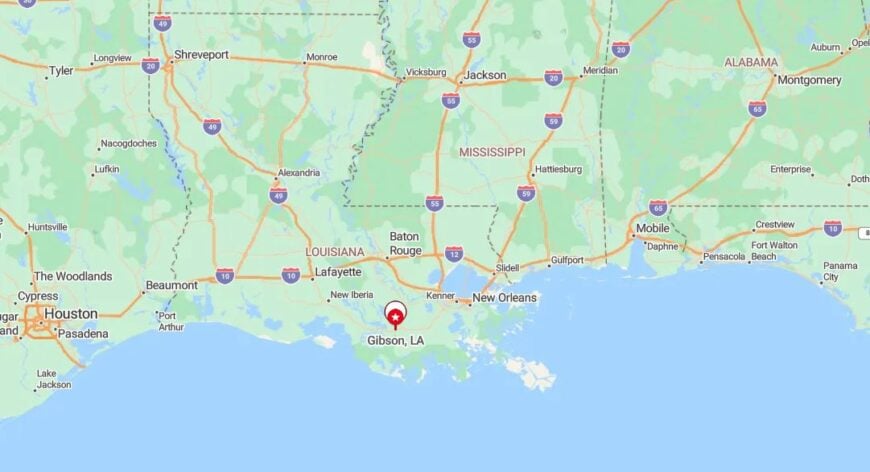
Gibson is located in Terrebonne Parish, west of Houma and accessible via LA-182. The town hugs Bayou Black, following its bends and curves.
You can reach Gibson by taking the quiet route west of town, where cypress groves and water reflections guide the way. It’s a hushed corner of southeast Louisiana.
20. The Backwater Haven of French Settlement
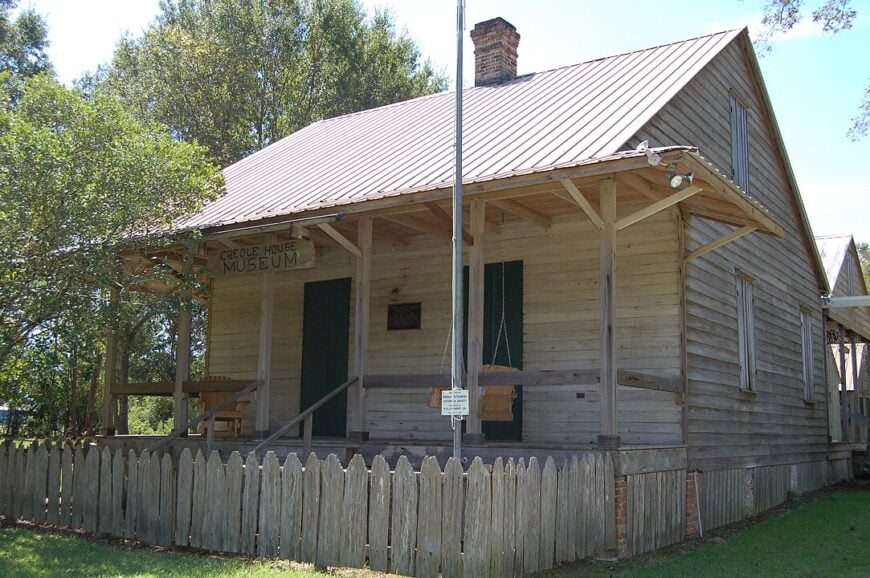
French Settlement is a small riverside town with a population of around 1,200, nestled quietly in Livingston Parish. It’s rich in history and dripping with charm, especially along the banks of the Amite River.
Locals here live slow and proud, often found fishing, boating, or hosting neighborhood cookouts. I adore the preserved French colonial touches and the calm waters that mirror the sky.
Its tucked-away feel comes from its winding roads and tree-lined lanes, far removed from busy highways and cities.
Where is French Settlement?
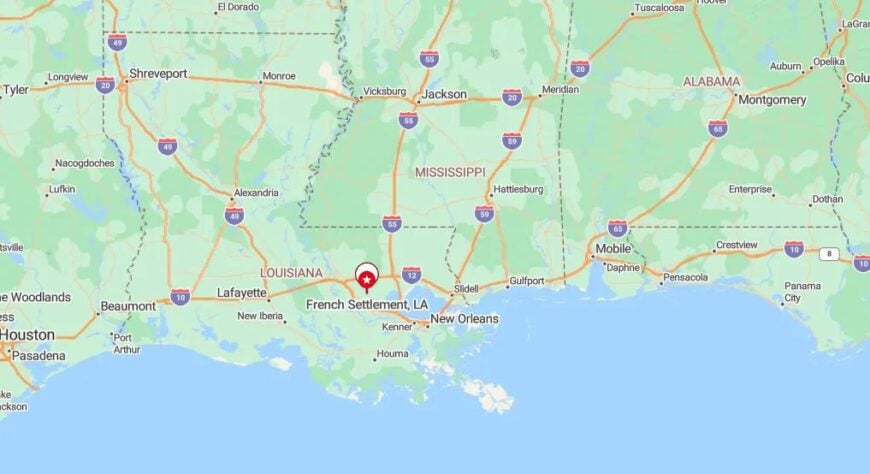
French Settlement sits along LA-16 in southeastern Louisiana, southeast of Denham Springs. It hugs the Amite River, a ribbon of calm cutting through rural land.
Driving in, you’ll cross old bridges and pass thick woods. It feels like a place time left alone—graceful and undisturbed.
19. The Lowland Solace of Labadieville
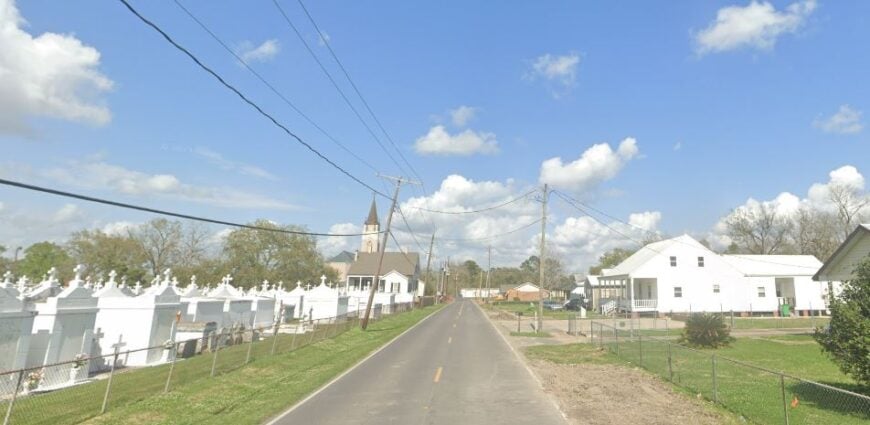
Labadieville is a peaceful lowland town where bayous curve like veins through the landscape. It’s part of Assumption Parish, and home to just under 2,000 residents.
Life here is slow and built on deep traditions—farming, fishing, and faith. I often stop at the historic St. Philomena Church and chat with locals at the corner market.
The quiet here is genuine, interrupted only by birdsong and the occasional passing boat. It’s the kind of place you miss the moment you leave.
Where is Labadieville?
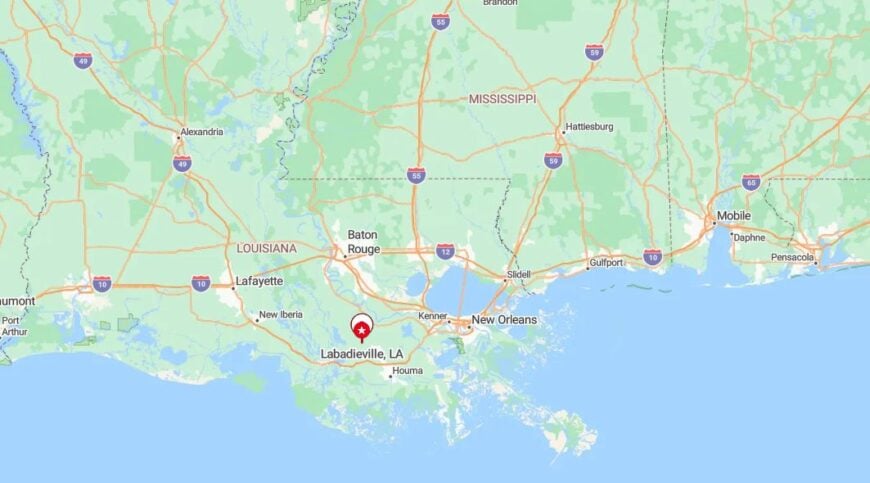
Labadieville lies along LA-1 in southeastern Louisiana, north of Thibodaux. It’s bordered by bayous, farmland, and woodland thickets.
The town is easily accessible but feels distant once you’re there. It’s wrapped in the comfort of open space and flowing waters.
18. The Riverbend Refuge of Killian
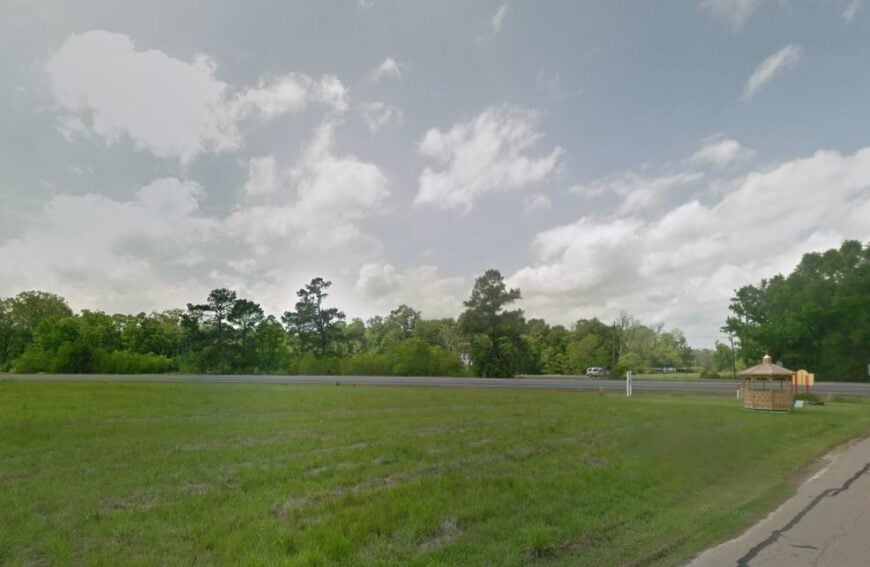
Killian is a tiny town along the Tickfaw River where stillness reigns. With fewer than 1,000 residents, it’s one of the most peaceful river towns I’ve come across.
I love the boardwalk views and watching the river reflect the ever-changing sky. Killian offers a true escape—no distractions, just nature.
The surrounding wetlands, thick woods, and slow roads make it feel like a secret sanctuary. Life here is about simplicity and solitude.
Where is Killian?
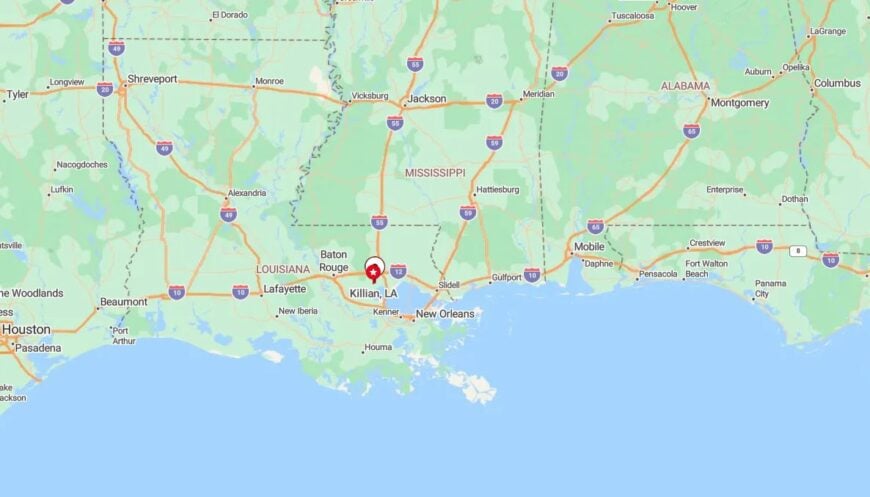
Killian is located in Livingston Parish, southeast of Springfield and accessible via LA-22. The Tickfaw River is its lifeblood, shaping both its landscape and lifestyle.
As you drive into Killian, the noise fades and the trees close in. The town seems to emerge quietly from the misty bayou.
17. The Quiet Bayou Curve of Choctaw
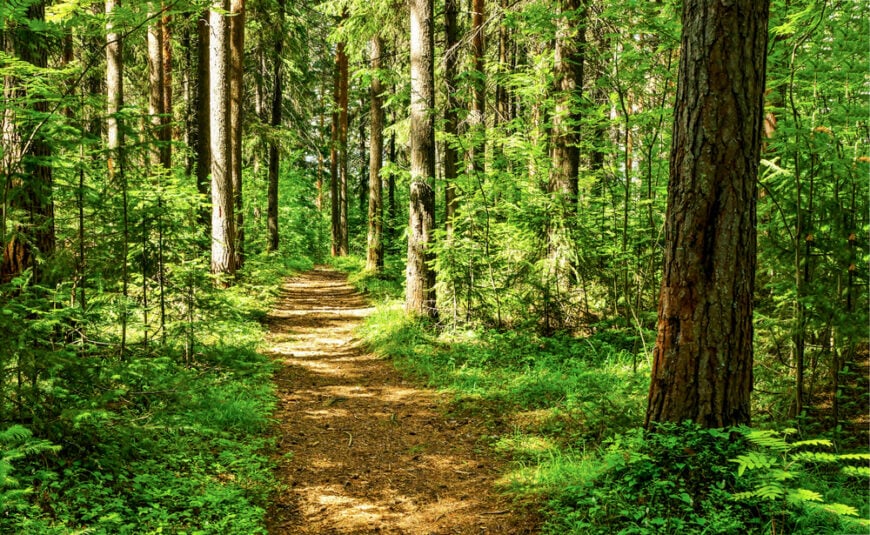
Choctaw is a peaceful bend in Lafourche Parish where life flows in sync with the bayou. With a population under 900, this rural gem offers wide skies, quiet porches, and the hum of nature.
Local life revolves around agriculture and close community ties. I’ve enjoyed peaceful moments along the waterways, watching egrets glide and fields shimmer under the sun.
Its seclusion lies in its tucked-away roads and flat farmlands, bordered by canals and woodlands. It feels timeless—like a place that’s always been this way.
Where is Choctaw?
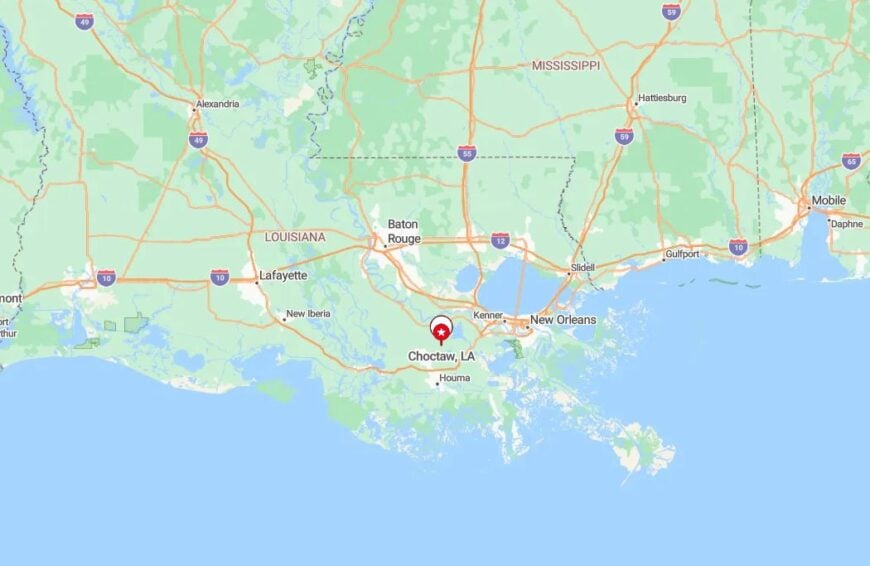
Choctaw sits in southeastern Louisiana, just west of Thibodaux, off LA-307. It’s surrounded by cane fields and waterways that keep it comfortably removed from nearby bustle.
You’ll pass long stretches of countryside to get there, making the arrival feel like a retreat into calm. Choctaw is a backroads beauty.
16. The Bayou Breeze of Belle Rose
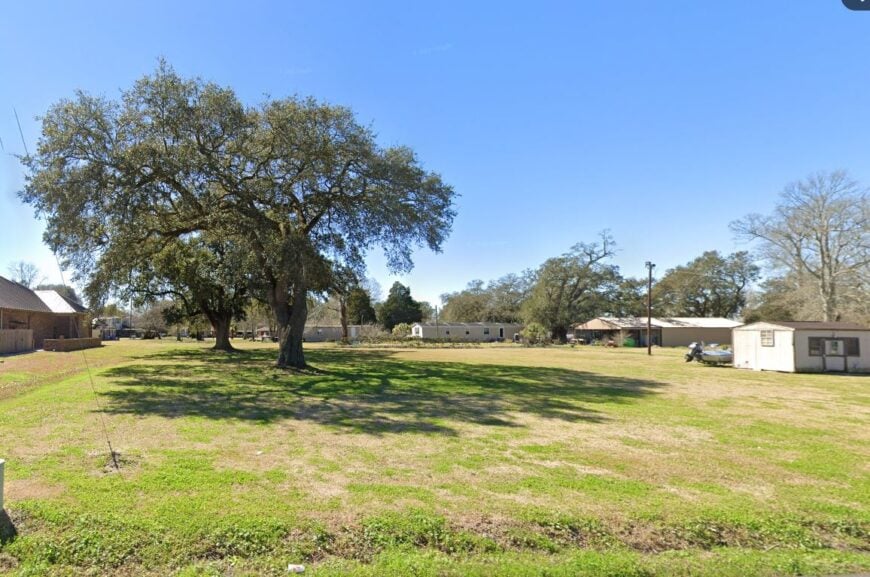
Belle Rose is a breezy little town in Assumption Parish with just over 1,800 people, and it’s one of those places where the world feels far away. Life here is shaped by sugarcane fields, bayou curves, and old oak trees.
I often take quiet drives through its narrow lanes, soaking in the sights of weathered homes and wildflowers. There’s a deep-rooted gentleness to everything here.
Belle Rose feels secluded not by distance, but by pace—slowed down, sweetened by tradition, and softened by nature’s rhythm.
Where is Belle Rose?
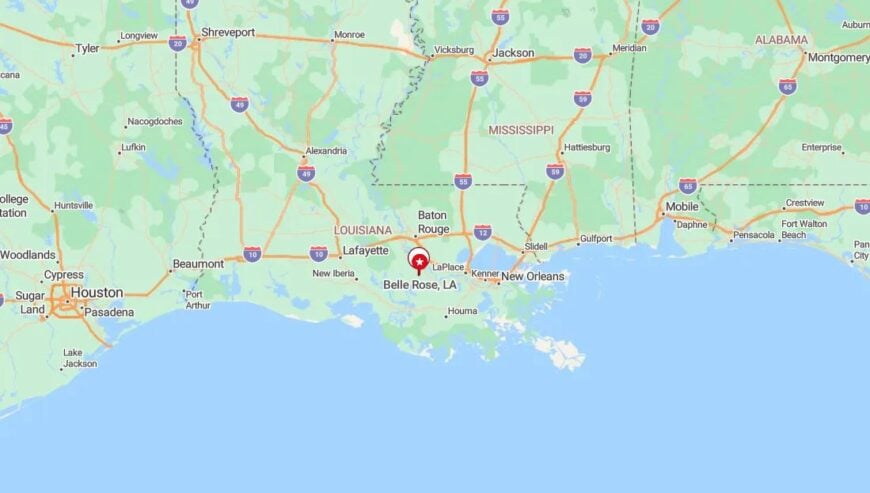
Belle Rose lies along LA-1 in southeastern Louisiana, between Donaldsonville and Napoleonville. It’s cradled between Bayou Lafourche and rows of farmland.
The journey in takes you through peaceful countryside dotted with silos and pastures. It’s a lovely, slow roll into seclusion.
15. The Still Waters of Springfield

Springfield is a riverside gem nestled along the Tickfaw River in Livingston Parish, and it remains one of my favorite weekend getaways. It’s a small, serene town with under 600 residents and a deep connection to the water.
Boating, kayaking, and fishing define the local rhythm. I love sitting by the docks at dusk, listening to frogs croak and watching the current move softly past.
Its location, surrounded by river bends and quiet roads, makes it feel like a forgotten haven. Nature wraps around Springfield like a warm blanket.
Where is Springfield?
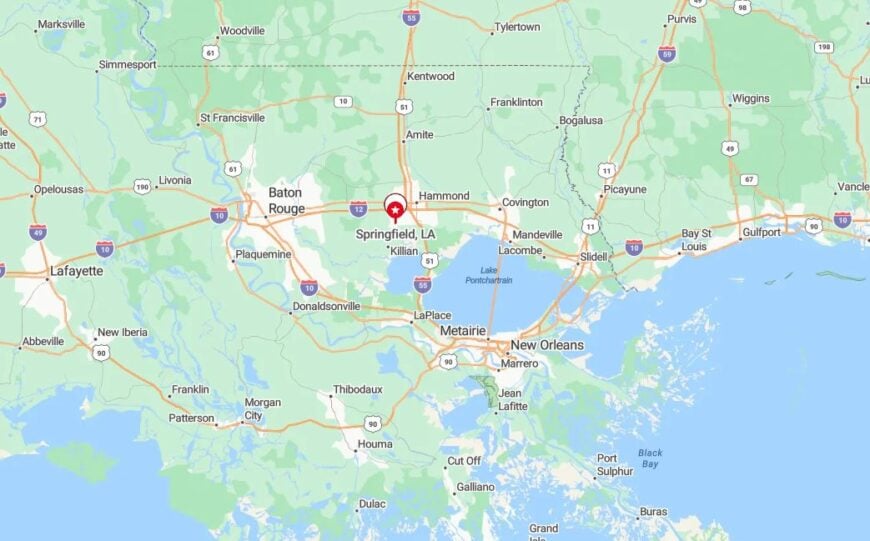
Springfield is located in southeastern Louisiana, just west of Hammond and off LA-42. The town sits right on the edge of the Tickfaw River, tucked between forests and waterways.
Reaching it involves crossing small bridges and winding through shaded lanes. Each turn feels like stepping deeper into a pocket of calm.
14. The Woodland Whisper of Mount Hermon
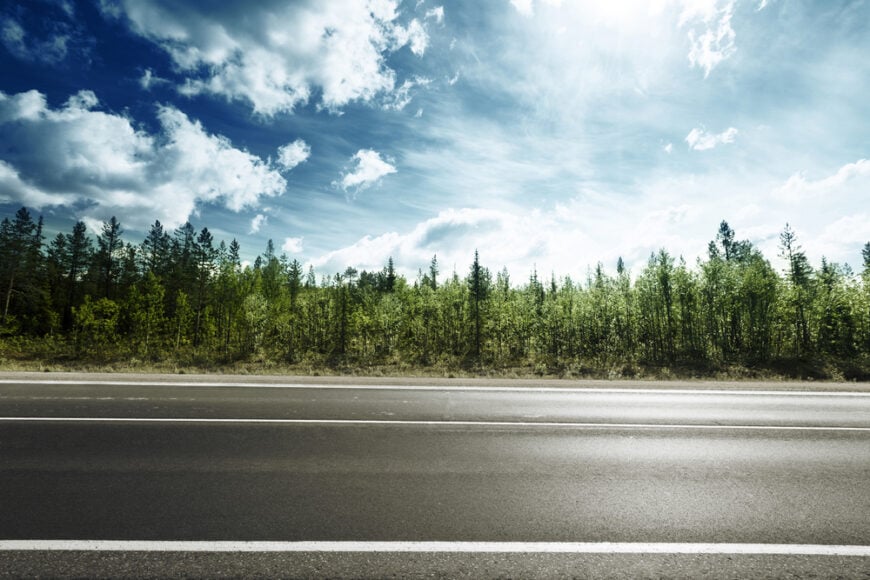
Mount Hermon is a quiet, forest-framed community in Washington Parish that feels miles from anywhere. With a population just over 1,000, it offers an ideal setting for peaceful retreats.
The area is known for its wooded hills, wildflower fields, and simple, unhurried life. I’ve spent afternoons picnicking beneath tall trees and exploring old country roads.
Its distance from major highways keeps it cloaked in stillness. Here, the rustle of pine leaves and chirping birds are the loudest sounds you’ll hear.
Where is Mount Hermon?
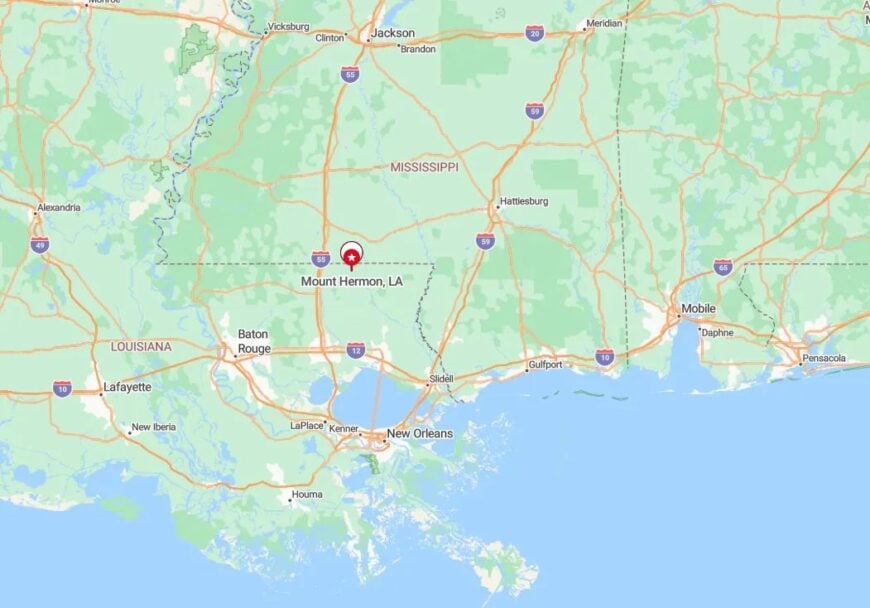
Mount Hermon is in southeastern Louisiana, northwest of Franklinton, near the Mississippi border. It’s accessible via LA-38 and sits amid quiet farmland and pine woods.
Driving there feels like a slow unraveling of stress, replaced by the peace of undisturbed rural life. It’s a place made for stillness.
13. The Prairie Silence of Tickfaw
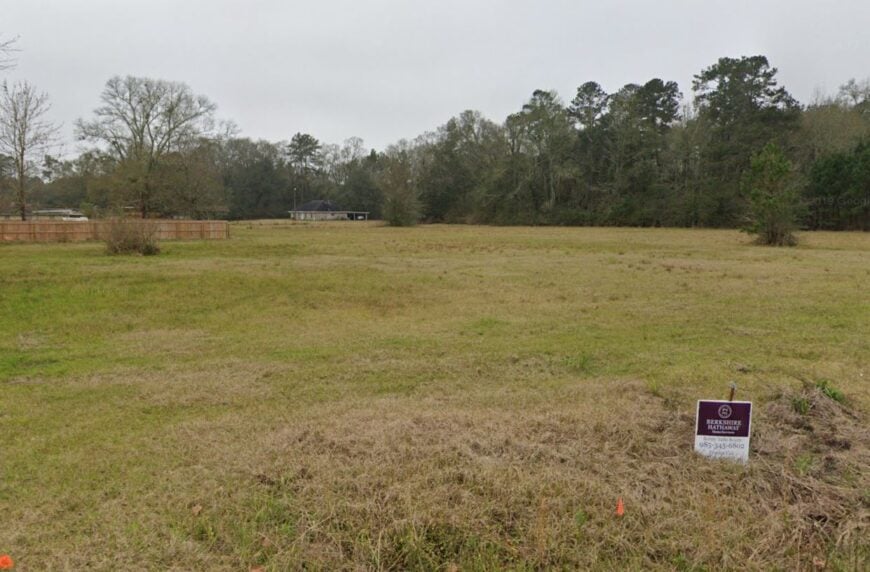
Tickfaw is a tiny village in Tangipahoa Parish, known for its quiet prairies and thick cypress borders. With a population under 700, this place whispers instead of shouts.
I love walking its gravel roads and stopping at roadside stands that sell honey and handmade goods. Life is deliberate here—gentle, purposeful, and rooted in the land.
The dense trees and wide pastures give it a naturally enclosed feeling, making it a haven for those looking to escape.
Where is Tickfaw?
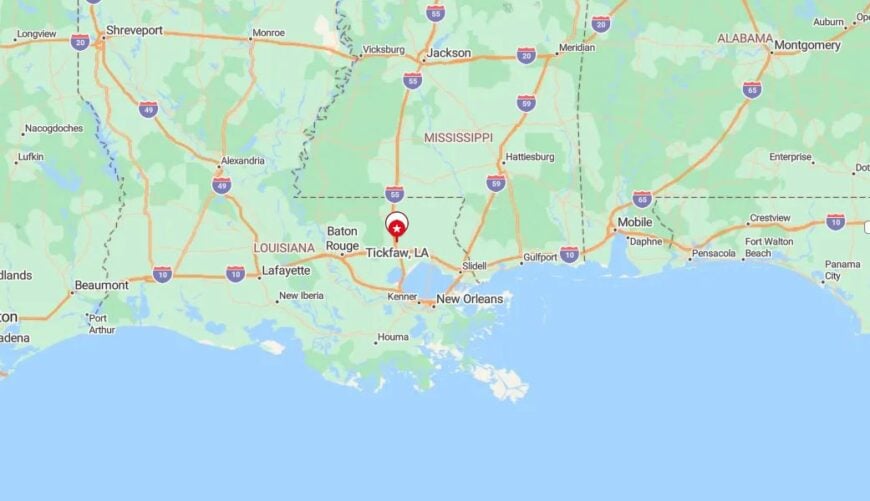
Tickfaw is situated just north of Hammond along US-51 in southeastern Louisiana. Though close to a larger town, its tucked-away feel keeps it blissfully quiet.
A short drive into the woods brings you there, and suddenly, everything slows. Tickfaw’s charm is in its calm embrace.
12. The River Refuge of Bayou Pigeon
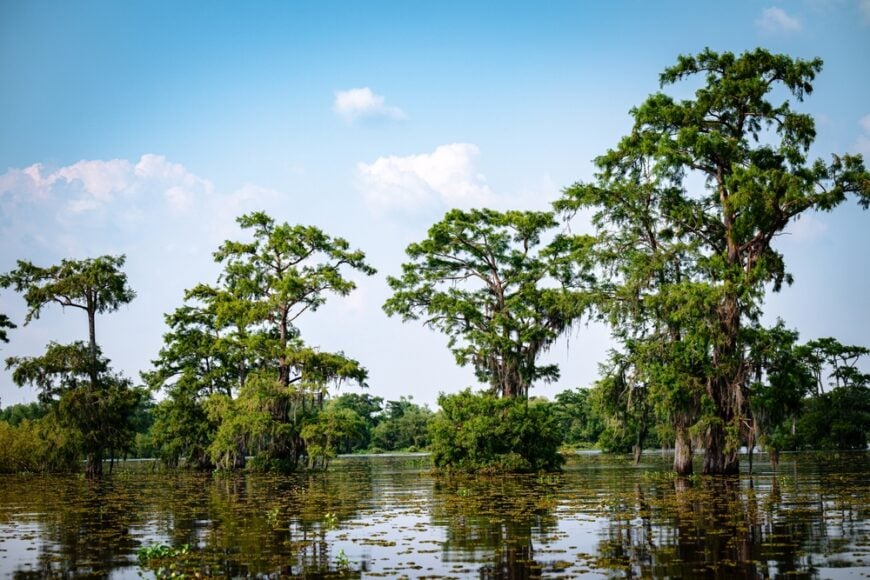
Bayou Pigeon is a watery sanctuary deep in Iberville Parish, where homes are raised high and life flows with the current. It’s small and humble, but bursting with natural wonder.
I’ve taken countless slow paddles through the bayous here, watching eagles nest and herons stalk through the reeds. The community thrives quietly off the water and its traditions.
Surrounded by swamps and accessible only by backroads, Bayou Pigeon feels like an island of its own.
Where is Bayou Pigeon?
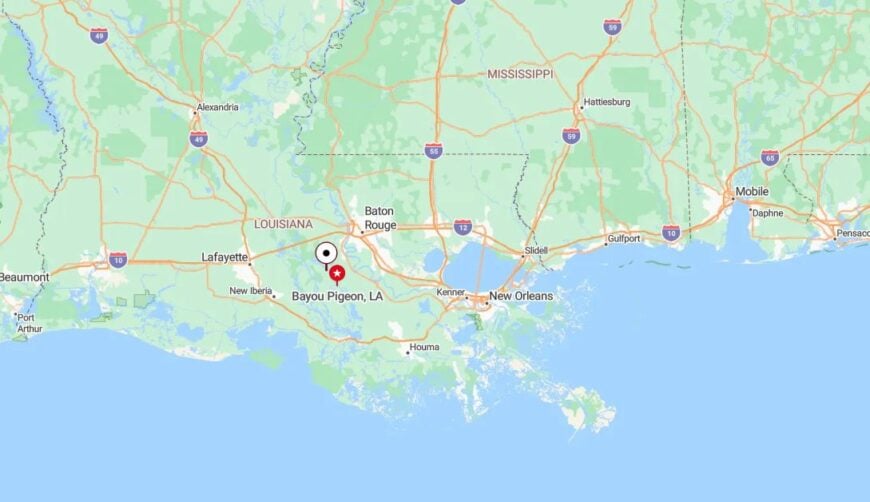
Bayou Pigeon is in southeastern Louisiana, south of Plaquemine, reached via LA-75 and a few narrow parish roads. It hugs the Atchafalaya Basin, one of the largest river swamps in the U.S.
The drive in takes you through water-logged wilderness and thick forests. It’s wonderfully remote—where the road ends and the wild begins.
11. The Shaded Roads of Tangipahoa

Tangipahoa is both the name of the parish and a tiny village within it, where trees stretch over roads like green tunnels. With fewer than 800 residents, it’s a quiet place often overlooked on the map.
The town’s simplicity is its charm—porch swings, dusty trails, and fields that roll into the distance. I like to stop here when I need a break from the world’s noise.
Its remoteness is amplified by its sparse development and the rural land that wraps around it like a protective shell.
Where is Tangipahoa?
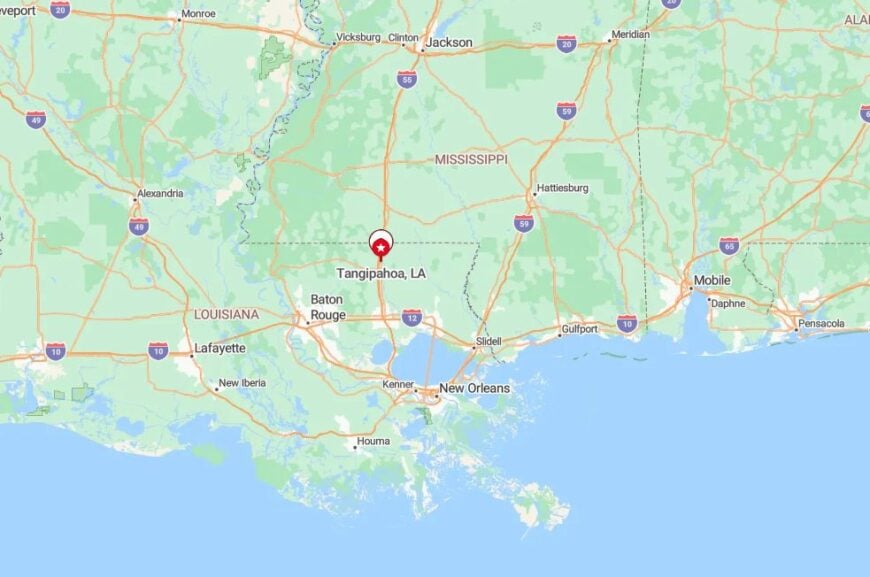
Tangipahoa sits in the northern part of Tangipahoa Parish, close to the Mississippi state line. It’s just off US-51, though you’d never guess it from how calm it feels.
As you enter, the trees close in and the modern world fades. Tangipahoa offers a breath of stillness you didn’t know you needed.
10. The Hidden Retreat of Bayou L’Ourse

Bayou L’Ourse, with a population of around 1,800, is a hidden retreat that I’ve found to be a perfect getaway into the heart of Louisiana’s bayou country. The town offers a serene environment where you can enjoy fishing, boating, and exploring the surrounding wetlands.
Local industries are primarily focused on oil and gas, as well as fishing, which gives the area an authentic working-class charm. I love how the community retains its Cajun culture, with local eateries serving up traditional dishes that you won’t find elsewhere.
What makes Bayou L’Ourse truly secluded is its location amidst winding bayous and dense swamplands, creating a peaceful atmosphere away from the hustle and bustle. It’s a place where the sounds of nature are the soundtrack to daily life, and I find that incredibly refreshing.
Where is Bayou L’Ourse?

Located in Assumption Parish, Bayou L’Ourse sits in the southeastern part of Louisiana, tucked away from major urban centers. Its seclusion is enhanced by the surrounding bayous and wetlands, which make it feel like a world apart.
I usually reach it by driving along LA-662, a scenic route that winds through picturesque landscapes. The journey itself feels like an escape, leading you deeper into the tranquility that Bayou L’Ourse offers.
9. The Remote Community of Kraemer

Kraemer is a remote community with a population of about 900, and it’s one of those places I’ve discovered that truly embodies the spirit of Louisiana’s wetlands. The town offers unique swamp tours where you can immerse yourself in the natural habitat of alligators, birds, and other wildlife.
Fishing is a staple activity here, both for leisure and as a part of the local industry, along with agriculture. I enjoy the quiet streets and the strong sense of community, where neighbors know each other and traditions run deep.
Kraemer’s seclusion comes from its location amidst vast waterways and wetlands, making it a tranquil place removed from the noise of city life. It’s the kind of place where you can unplug and reconnect with nature.
Where is Kraemer?

Nestled in Lafourche Parish, Kraemer is situated in southeastern Louisiana, not far from the banks of Bayou Boeuf. The town’s remoteness is heightened by its surrounding swamplands, creating natural barriers that keep it isolated.
I usually access Kraemer via LA-307, a scenic route that meanders through the countryside. The journey through moss-draped trees and still waters adds to the feeling of entering a secluded haven.
8. The Quiet Backwoods of Manchac

Manchac is one of those quiet backwoods towns that I’ve stumbled upon, with a tiny population that barely breaks into triple digits. This tranquil village offers some of the best fishing and boating opportunities between Lake Maurepas and Lake Pontchartrain.
One of my favorite spots is Middendorf’s Restaurant, famous for its thin-fried catfish—a true local gem. The area revolves around fishing and tourism, with swamp tours showcasing the unique ecosystem of the Manchac Swamp.
What makes Manchac secluded is its location, enveloped by vast waterways and marshlands that create a natural barrier from the outside world. The ambiance here is peaceful, with a slow pace that lets you savor every moment.
Where is Manchac?

Located in Tangipahoa Parish, Manchac sits along old U.S. Highway 51, nestled between two expansive lakes. Its seclusion is amplified by the surrounding swamps, which I find give it a mystical, almost timeless quality.
Getting there involves a scenic drive over the Manchac Swamp Bridge, one of the longest bridges over water in the world. The journey itself feels like a passage into a different realm, away from the urban noise and into nature’s embrace.
7. The Tranquil Enclave of Husser

Husser is a tranquil enclave that I’ve come to appreciate for its peaceful rural charm, with a small population that keeps it intimate and close-knit. The area is characterized by sprawling acreages and farmland, offering a true taste of country living.
One of my favorite activities is visiting nearby farms where you can pick your own produce or enjoy horseback riding. Agriculture is the mainstay here, with many residents engaged in farming and livestock raising.
What makes Husser secluded is its location amidst rolling hills and forests, providing a serene backdrop that’s perfect for those seeking privacy and quiet. It’s the kind of place where you can relax on a porch and listen to the sounds of nature without interruption.
Where is Husser?

Situated in Tangipahoa Parish, Husser lies in southeastern Louisiana, not far from the banks of the Tangipahoa River. Its seclusion stems from its distance from major highways and urban areas, nestled among rural roads and woodlands.
I usually take LA-445 to get there, enjoying the scenic drive through the countryside. The peaceful journey sets the tone for a visit that’s all about unplugging and embracing the simplicity of rural life.
6. The Isolated Beauty of Bayou Corne

Bayou Corne is an area that I’ve found to be an isolated beauty, with a small community that was once home to around 300 residents. The lush surroundings of bayous and swamplands make it an ideal spot for fishing and boating enthusiasts like myself.
The quiet waters and abundant wildlife offer a peaceful retreat into nature. The town’s history is deeply connected to the natural environment, with some residents involved in industries like fishing and oil exploration.
Bayou Corne’s seclusion is due to its enveloping wetlands, creating a serene and remote atmosphere that feels worlds away from urban life.
Where is Bayou Corne?

Located in Assumption Parish, Bayou Corne sits in southern Louisiana, nestled among dense swamps and waterways. Its isolated setting is heightened by limited road access and the surrounding natural barriers of the bayous.
I usually reach it by taking LA-70, a route that winds through scenic landscapes and offers glimpses of the area’s unique ecology. The journey to Bayou Corne is part of its allure, leading you into a secluded haven embraced by nature.
5. The Serene Wilderness of Robert

Robert is a serene wilderness that I’ve come to love, an unincorporated community with a modest population that embraces country living. The area is surrounded by lush forests and sprawling farms, offering plenty of opportunities for outdoor enthusiasts.
I particularly enjoy visiting the nearby Global Wildlife Center, where you can take a safari tour to see exotic animals roaming freely. Agriculture is the backbone of the local economy, with many residents engaged in farming and related activities.
Robert’s seclusion comes from its expansive rural landscapes and the quiet that only such a setting can provide. It’s a perfect escape for those who appreciate the tranquility of nature.
Where is Robert?

Located in Tangipahoa Parish, Robert lies in southeastern Louisiana, conveniently positioned near the junction of I-12 and LA-445. Despite this, it maintains a sense of isolation due to the surrounding woodlands and minimal urban development.
I often take the scenic backroads to get there, which offer a peaceful drive through the countryside. The combination of accessibility and seclusion makes Robert a unique destination where you can easily unplug from daily stresses.
4. The Secluded Shores of Bayou Gauche

Bayou Gauche is one of those places I’ve found where the secluded shores invite you to slow down and soak in the natural beauty. With a population of about 2,000, this waterside community offers excellent fishing and boating opportunities in its expansive wetlands.
The local industries revolve around fishing and some oil and gas operations, reflecting a way of life deeply connected to the water. I appreciate the genuine hospitality of the residents and the preservation of their Cajun heritage.
Bayou Gauche’s seclusion is accentuated by its location amidst vast marshlands, which provide a serene and undisturbed environment. It’s a haven for those looking to escape into nature’s quiet embrace.
Where is Bayou Gauche?

Situated in St. Charles Parish, Bayou Gauche is located in southeastern Louisiana, southwest of New Orleans. The town’s remoteness is heightened by its limited access—primarily via Bayou Gauche Road (LA-306), which winds through picturesque landscapes.
I enjoy the journey there, passing through small communities and open marshes that set the tone for a peaceful retreat. The isolation provided by the surrounding wetlands makes Bayou Gauche feel like a world apart.
3. The Remote Village of Bayou Goula

Bayou Goula is a remote village along the Mississippi River that I’ve found to be rich in history and tradition, with a small population that keeps it intimate. The area offers a glimpse into Louisiana’s past, with historical sites like the St. John the Baptist Catholic Church.
I enjoy strolling along the riverbanks, where you can sense the deep connection between the community and the mighty Mississippi. Agriculture is a mainstay here, and the residents take pride in their heritage and close-knit community.
Bayou Goula’s seclusion is due to its tucked-away position along the river and the absence of major development, making it a peaceful retreat from modern distractions.
Where is Bayou Goula?

Located in Iberville Parish, Bayou Goula sits in southeastern Louisiana, south of Baton Rouge along LA-1. Its remote feel comes from its small size and the surrounding rural landscapes that separate it from urban centers.
I often take the scenic route along the Mississippi River, which adds to the sense of stepping back in time. Accessing Bayou Goula involves a leisurely drive that allows you to appreciate the serene environment and the area’s historical charm.
2. The Quiet Retreat of Pointe Aux Chenes

Pointe Aux Chenes is a quiet retreat that I often visit when I want to immerse myself in the tranquility of Louisiana’s marshlands. With a small population of just a few hundred, this fishing village offers an authentic experience of coastal living.
Activities here revolve around fishing, shrimping, and crabbing—traditions that have been passed down through generations. I love exploring the Pointe-aux-Chenes Wildlife Management Area, where you can observe a diverse range of wildlife in their natural habitat.
The town’s seclusion comes from its location amidst vast marshlands, providing a peaceful ambiance that’s perfect for unwinding.
Where is Pointe Aux Chenes?

Situated in Terrebonne Parish, Pointe Aux Chenes is located in southeastern Louisiana, south of Houma. Its remoteness is accentuated by the single road that leads into town, winding through miles of wetlands.
I typically access it via LA-665, a route that offers stunning views of the marshes and waterways. The town’s isolation, coupled with its natural surroundings, makes it a hidden gem for those seeking solitude and a connection with nature.
1. The Hidden Bayou Hamlet of Maurepas

Maurepas is my top pick for a hidden bayou hamlet that captures the essence of seclusion and natural beauty. With an approximate population of 1,000, this community offers a peaceful escape nestled between lush forests and sparkling waterways.
I enjoy boating on Lake Maurepas and fishing in the surrounding rivers and bayous. The local industries revolve around fishing and boating, reflecting the residents’ deep connection to the water.
What makes Maurepas truly secluded is its setting amid dense woodlands and waterways, far removed from the urban hustle. It’s a place where I can truly get away from it all and immerse myself in nature’s tranquility.
Where is Maurepas?

Located in Livingston Parish, Maurepas sits in southeastern Louisiana, northwest of Lake Pontchartrain. Its seclusion is enhanced by the surrounding swamps and forests that envelop the area, providing a natural barrier to the outside world.
I reach Maurepas by taking LA-22, a scenic route that meanders through the countryside and along waterways. The journey itself is part of the charm, leading me deeper into the serene landscapes that define this hidden gem.




